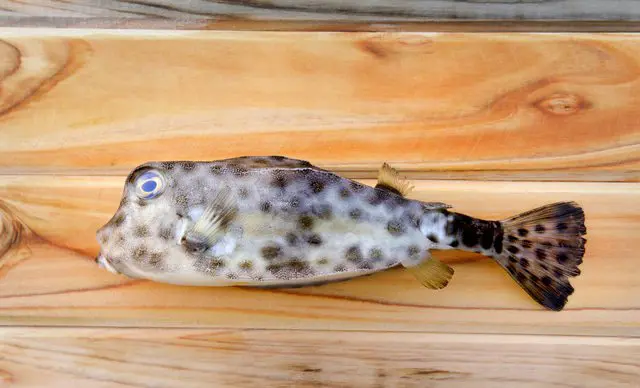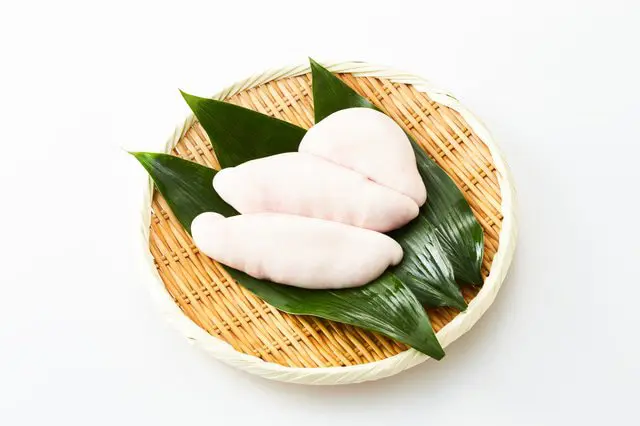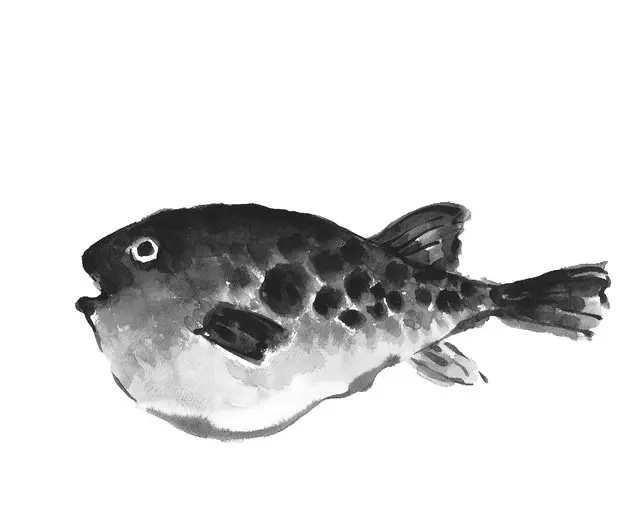Fugu - Where To Enjoy Delicious Pufferfish in Japan

Fugu, or puffer fish, is a marine delicacy that has been enjoyed in Japan since ancient times. This article introduces the varieties of fugu, how to enjoy this delicacy, as well as recommended fugu restaurants and the average prices of this dish.
What Is Fugu?

One of the most luxurious foods in Japan is fugu or puffer fish (also called blowfish), which is a seafood that the Japanese have been familiar with since ancient times. A very strange-looking fish, the white flesh, as well as the skin, fillet, milt and other parts of fugu are used to make sashimi, or are deep fried, and used in an extensive range of dishes that are eaten with gusto.
Fugu are internationally known for being a highly poisonous fish, which is why these dishes can only be prepared by exceptionally skilled chefs that have studied for years and undergo vigorous certification processes regularly. The word 'fugu' closely resembles 'fuku', which is the Japanese word for 'good fortune' and as such is treated like a lucky charm and served during celebrations and at other auspicious occasions. Today we will be taking a look at the history of fugu and its main forms of preparation, as well as reporting on fugu specialty shops.
Table of Contents:
1. The History of Fugu Cuisine
2. Why Is the Pufferfish So Delicious?
3. Delicious Fugu Dishes That You Just Have to Try
4. Fugu Toxin and Safety Concerns
5. Price Range of Fugu
6. How to Order Fugu at Restaurants
7. Where to Eat Fugu
The History of Fugu Cuisine

Loved by foodies as a high-class food, fugu are perhaps most infamous for the toxin found in their liver and ovaries. Because of this there was a long period of history wherein eating fugu was forbidden, and this fish and its related cuisines all but disappeared from Japan.
But about 150 years ago, fugu cuisine reached a turning point.Japan's first prime minister at that time, Itou Hirobumi stopped by a traditional restaurant in Shimonoseki (a place famous for its fugu). Due to the instability of the region then, fugu were the only fish that could reliably be caught in Shimonoseki at the time, and the proprietress of the restaurant had no choice but to offer the prime minister fugu-based dishes. Fortunately, the prime minister thoroughly enjoyed the fugu dishes - he is said to have even been smacking his lips because of them. From then on, fugu cuisine had the official seal of approval, although it became a requirement for chefs serving fugu to have a special cooking license.
Why Is the Pufferfish So Delicious?

Fish is generally separated into two categories, red fleshed or white fleshed, and fugu is an example of a white-fleshed fish. The standout characteristic of this fish, however, is that, compared to other white fish, fugu has much more protein, and very low levels of fat. A low-calorie fish, fugu's skin has plenty of collagen in it, making it an excellent fish to eat to improve skin texture as well as overall health. The main distinction of the flesh is that it has a lot of fiber to it, giving it a strong, elastic-like strength to it when chewed. As a result, fugu sashimi is sliced far thinner than standard sashimi slices when prepared. And because fugu has plenty of umami to it, the flesh of this fish has a sweetness to it too. If you chew it thoroughly you will be able to enjoy all the subtle points of its flavor.
Delicious Fugu Dishes That You Just Have to Try
1. Fugu Sashimi (Tessa)

The most common method of preparing fugu is sashimi style, which is referred to as tessa.This dish is especially recommended to those who would like to enjoy the unadulterated color, flavor and springy texture of the fugu. The nearly transparent slices of fugu sashimi aren't meant to be eaten individually, rather connoisseurs say that you should pick up a few sheets of it with your chopsticks and eat them after dipping them in momiji-oroshi (grated daikon radish with chili pepper), ponzu, or soy sauce.
Not only delicious in flavor, the artistic arrangements of fugu sashimi, which include kikumori (chrysanthemum shaped), botanmori (peony shaped),tsurumori (crane shaped), kamemori (turtle shaped), and others, are also quite visually aesthetically pleasing as well. When you enjoy fugu at a restaurant you must take the time to appreciate the artistic work of the professionals who made this dish.
2. Kawasashi

Fugu kawasashi is a dish of parboiled fugu skin that has been finely sliced. This gelatinous, collagen rich and slightly crunchy skin is eaten with ponzu and is an excellent match for sake.
3. Fugu Hotpot (Tecchiri) and Fugu Zousui (Fugu Rice Gruel)

Called tecchiri in the Kansai region, fugu hotpot is a dish of fugu meat and bones, vegetables and various mushrooms simmered together in an earthenware pot. The ingredients are added to the hot kombu-based dashi and slowly cooked; this is the perfect dish for cold winter nights. And it tastes even better when savored with the yakumi (condiments) of your choice or with added ponzu. And after you have enjoyed all the ingredients in the fugu hotpot, the leftover dashi that has absorbed all the deliciousness of these fish is used to made fugu zousui, a rice gruel with fish and vegetables, allowing you to enjoy the deliciousness of the fugu down to the very last drop.
4. Grilled Fugu

Grilled fugu is a dish where the tender white flesh and milt of the fish are cooked on a charcoal grill. This dish is typically prepared with a light sprinkling of salt or by being basted with a rich sauce before grilling, it depends on the restaurant, but the distinctive flavors of both dishes are wonderful. The scent of the fugu when it has just been grilled is deliciously fragrant enough to whet anyone's appetite. The surface of the milt is crunchy and especially fragrant when grilled, while the milky mildness of the inside is retained - making for a truly enjoyable dish.
5. Fugu Karaage (Deep Fried Pufferfish)

Skinned and sliced fugu that has been deep fried in oil is known as fugu karaage, and makes a perfect snack to go along with alcohol. The crunchy coating and soft meat are addictive. Add a kabosu citrus or lemon juice, or even a pinch of salt, and you will soon find yourself gobbling these up with your fingers. True fugu connoisseurs say that the meat from the area around the fugu's mouth is especially good when prepared this way.
6. Fugu Nikogori (Jellied Fugu)

Fugu skin is very rich in gelatin. By boiling the skin along with other ingredients, the richness and gelatin from the skin is then added to cold soba, making fugu nikogori. The fine quality collagen, low calorie and high protein level of fugu skin makes it a very popular health food.
7. Fugu Sushi

Of the popular ways of preparing fugu, alongside sashimi or hotpot style, fugu sushi is an exquisite dish. There are many different ways of preparing fugu sushi in either makizushi (rolled) or nigirizushi (topped) form. We recommend eating these types of sushi with momiji-oroshi (grated daikon radish with chili pepper), green onion, ponzu or other refreshing condiments.
8. Fugu Hirezake (Hot Sake and Fugu Fins)

Fugu hirazake is made with Hokkaido's tora-fugu fins that have been sun dried and cooked over an open flame, then added to heated Japanese sake (heated to 75-80 degrees) and drunk. The rich extract from the fugu percolates through the sake, giving it a different flavor than usual and making for a very enjoyable drink.
Fugu Toxin and Safety Concerns

The liver and ovaries of fugu contain a potent toxin, known as tetrodotoxin, that has killed numerous people. However, through the study of fugu's toxin and current developments, the national government has designated criteria wherein selected fugu that meet appropriate standards are considered to be safe and are permitted for sale. And, as mentioned earlier, those restaurants that serve fugu and their chefs are required to have a fugu preparation and cooking license in order to be able to serve this fish, meaning that it is possible to safely eat fugu at one of these restaurants.
Price Range of Fugu

An individual can expect to pay anywhere from 3000 yen to several thousands of yen for fugu sashimi, depending on market value. However, there are also many specialty restaurants that offer fugu-centered course meals. The average price of a full course dinner will set you back between 10,000-30,000 yen but there are some Japanese restaurants where you can enjoy fugu for a few thousand yen as well.
In fugu producing areas, such as Kyushu, Chuugoku, Shikoku, fresh fugu can be enjoyed for more moderate prices than in other regions. Shimonoseki in Yamaguchi prefecture is the largest fugu handling area in Japan and as such, Karato Market has surprisingly low prices - you can eat fugu sashimi here for only 1000 yen! To learn more, please read: High Ranked Fugu Sashimi For 1000 Yen! A Gourmet Experience At Karato Market, Shimonoseki.
How to Order Fugu at Restaurants
At fugu restaurants, there are usually course and single dish menus available. The course menu tends to contain the lower priced fugu dishes; the majority of these offering kawasashi, tessa, tecchiri, and zousui. These course menus are ideal for those who want to eat their full of the standard fugu dishes. But of course you can order single items from the other menu to enjoy alongside other dishes as well.
Where to Eat Fugu
As the special fugu preparation license is required in order to serve this fish, you cannot find fugu on the menu just anywhere. Fugu specialty shops and fugu ryotei (traditional and somewhat luxurious Japanese restaurants) are where you can leisurely enjoy these dishes.
The Home of Fugu - Shimonoseki, Yamaguchi
In the Kyushu/Chugoku/Shikoku regions, fugu can be found for very reasonable prices at a number of restaurants. Haedomari Market in Shimonoseki, Yamaguchi is where about 80% of the fugu in Japan is handled, making this the most famous fugu area in the country. For this reason, you will find fugu specialty shops throughout Yamaguchi prefecture.
The main location in Shimonoseki of Shunpanro, the shop that served fugu to the first prime minister of Japan, Itou Hirobumi, at a time when it was still prohibited, and subsequently was the reason that the ban was lifted, is still in operation and considered to be a historically important shop now. By all means, if you are going to be traveling in Shimonoseki, pay a visit to this shop that changed the course of Japanese food history.
Shimonoseki Shunpanro Main Store
Address: Yamaguchi, Shimonoseki, Amidaijicho 4-2
Phone: 083-223-7181
Website: Shunpanro
There is also a location in Tokyo.
Address: Tokyo, Chiyoda, Hirakawacho 2-7-9 JA Kiyosai Building
Phone: 03-5211-2941
Ryotei Kogushiya
Address: Yamaguchi, Shimonoseki, Chofuminaminocho 5-15
Phone: 083-245-0051
Website: Ryotei Kogushiya
Fuku Tokoro Kitagawa
Address: Yamaguchi, Shimonoseki, Nabecho 7-11
Phone: 083-232-3212
Website: Fuku Tokoro Kitagawa
Kappo Ryokan Otomi
Address: Yamaguchi, Shimonoseki, Amidaijocho 7-9 (Reservations only)
Phone: 083-222-2529
Website: Kappo Ryokan Otomi
Highest Fugu Consumption - Osaka
Many people must have seen the giant swimming pufferfish paper lantern at Shinsekai in Osaka. Of the total hauls of fugu in Japan, nearly 60% is consumed in Osaka, which means that there are many fugu specialty shops to choose from here.
Zuboraya Shinseki Main Shop
Address: Osaka, Naniwa, Ebisuhigashi 2-5-5
Phone: 06-6633-5529
Website: Zuboraya Shinseki
Takoyasu
Address: Osaka, Minato, Yuunagi 1-15-5
Phone: 06-6571-1525
Fugukujira
Address: Osaka, Chuo, Sennichimae 1-5-18
Phone: 06-4708-5065
Goza Fugu
Address: Osaka, Chuo, Dotombori 2-4-5
Phone: 06-6213-3203
Luxury in Tokyo
Although fugu has the image of being a food mostly consumed in western Japan, it is possible to enjoy this luxurious fish at many places in Tokyo as well. Somewhat expensive, the price is well worth it to those who wish to enjoy fresh wild fugu, which is available at the following restaurants.
Ajiman
Address: Tokyo, Minato, Roppongi 3-8-8 WOO Building 1F
Phone: 03-3408-2910
Kichisei
Address: Tokyo, Chuo, Nihonbashi Ningyocho 2-21-5
Phone: 03-3666-9779
Website: Kichisei
Fugu Akasaka Meuga
Address: Tokyo, Minato, Shirokane 1-13-5
Phone: 03-5423-2827
Fugutake
Address: Tokyo, Minato, Azabu Juban 3-2-9
Phone: 03-3452-7009
Website: Fugutake
Reasonable Shops in the City
Now fugu specialty shops or ryotei can be found in most major cities in Japan, but if you would like to eat fugu for a more reasonable price, then a trip to one of these chain stores is our recommendation.
Guenpin Fugu
29 locations in Tokyo and located throughout Japan
Website: Guenpin Fugu
Tora Fugu Tei
29 shops within Tokyo, and growing in the Kanto region
Website: Tora Fugu Tei
Fugu cuisine is eaten by the Japanese in times of celebration. Compared to sushi and tempura that have become well-known foods overseas, fugu is still a relatively unknown food outside of Japan. In other words, where else but Japan can you have the opportunity to enjoy this little-known dish?
If you are in Japan and want to splurge a little, please try the exquisite fugu dishes served at one of these superb specialty restaurants.
All pictures from PIXTA
94年生まれ。神戸出身、東京在住。アメリカからの帰国子女。旅、アート、食が大好きな大学生。
































![[2026] Top 5 Strawberry Picking Spots in Tokushima, Naruto| Farms and Access Guide for January to May](https://resources.matcha-jp.com/resize/720x2000/2025/03/06-227165.webp)


